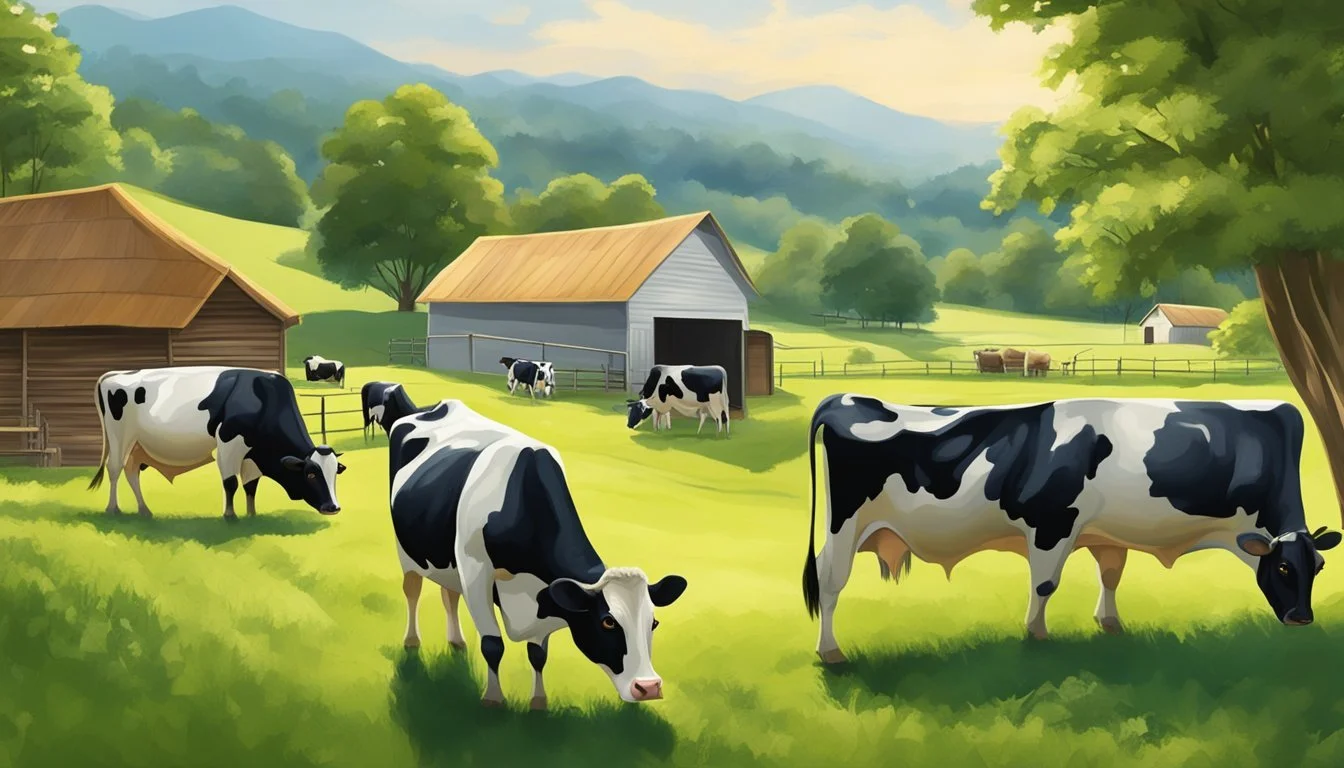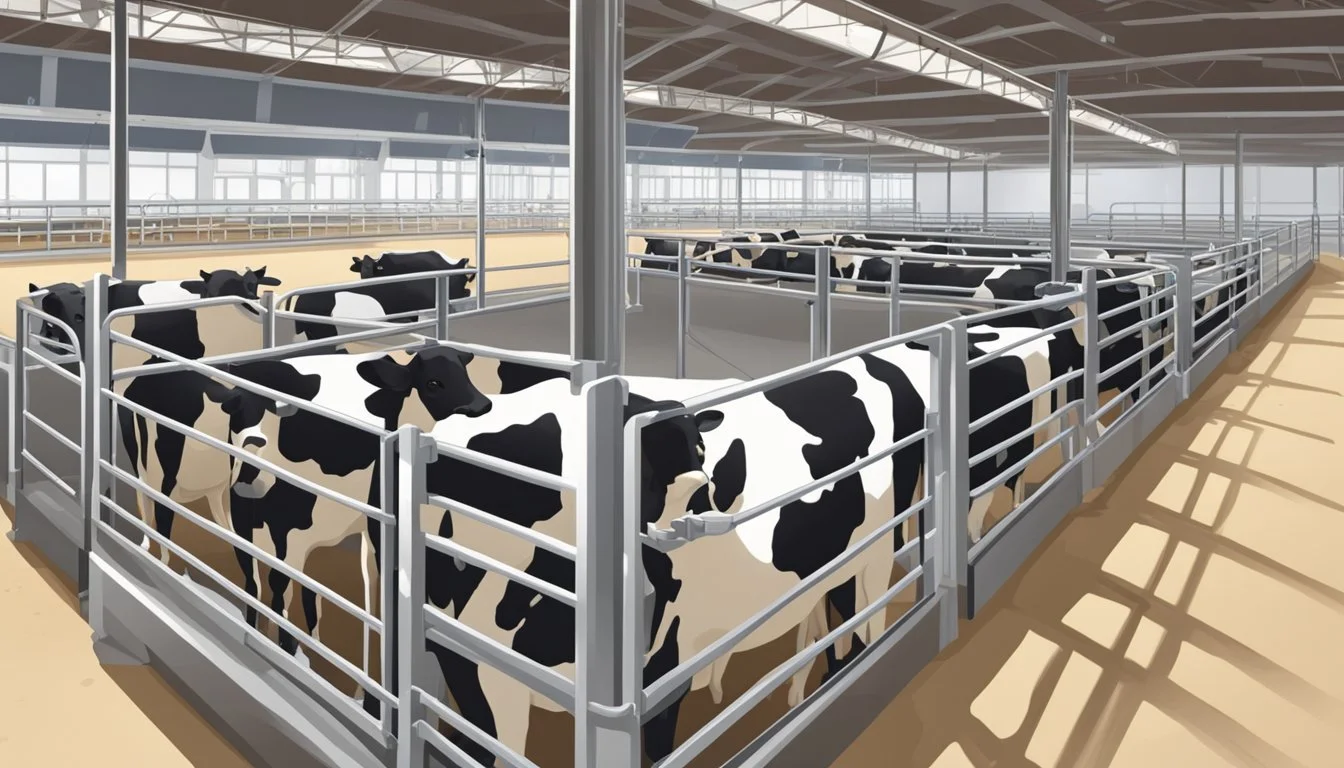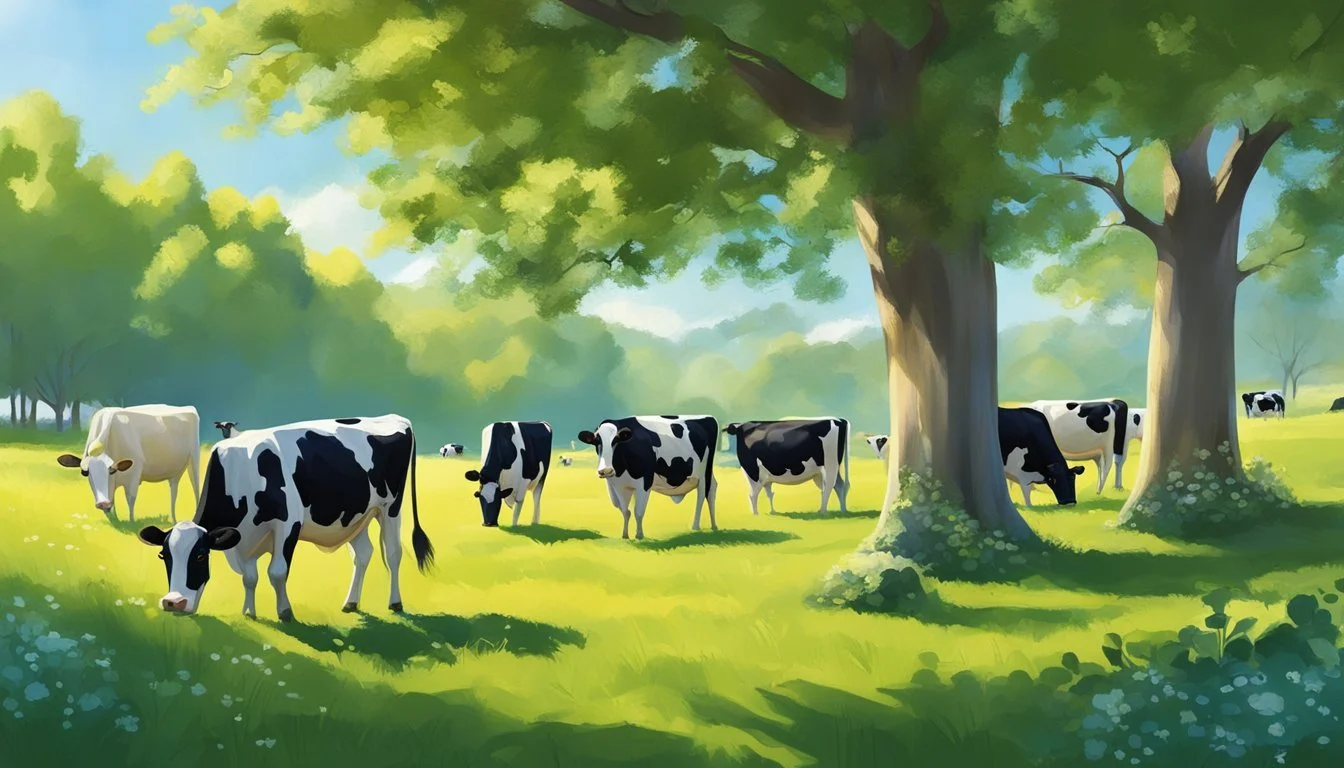What Are the Best Practices for Maintaining Milk Production in Dairy Cows
Essential Strategies for Dairy Farmers
Maintaining consistent milk production in dairy cows is crucial for dairy farmers, as it directly affects the profitability and sustainability of their operations. To achieve this, a combination of optimized nutrition, proper herd management, and good animal welfare practices is essential. Dairy cows require a diet that is not only rich in nutrients but also balanced to meet their specific stage of lactation and physiological needs. By closely monitoring feeding practices during critical periods such as the dry period and early lactation, farmers can influence a cow's peak milk potential, which, in turn, sets the pace for the entire lactation cycle.
Effective management of dairy cows goes beyond nutrition, encompassing everything from genetics and breeding to daily milking routines. Using proven techniques in breeding and genetics can help select cows with higher milk yield potential, but it is equally important to provide a comfortable environment for the cows to thrive in. Comfortable housing, regular health checks, and stress reduction are all practices that have been shown to enhance milk production. Furthermore, disease prevention and prompt medical care are vital in keeping the herd healthy and productive.
Attention to detail in these areas ensures that the cows not only peak well in their lactation but also maintain a flatter and more prolonged lactation curve. Each aspect of dairy cow management plays a role in the complex process that leads to successful milk production. By adhering to best practices in all these areas, dairy farmers can strive for maximum productivity from their herds.
Understanding Dairy Cow Physiology
An intricate understanding of dairy cow physiology is paramount to optimizing milk production. This encompasses the various stages of lactation, the factors influencing milk composition, and the relationships between milk yield and body condition.
Stages of Lactation
Dairy cattle undergo different stages of lactation that significantly affect milk production. The lactation cycle can be broken down into three key phases: the early lactation, where milk yield rapidly increases and peaks; the mid lactation, where milk production stabilizes; and the late lactation, leading up to the dry period. Managing each of these stages is crucial for maintaining high milk yields while also ensuring the health of the cow. A well-managed dry period, typically 50 to 60 days, is essential for the cow to replenish her body stores and prepare for the next lactation cycle.
Determinants of Milk Composition
The composition of milk, which includes crucial components such as milk protein, milk fat, and lactose, is influenced by various factors. Genetic makeup, diet, and stage of lactation dynamically determine the content of these components in milk. For example, milk fat and protein content are usually higher during the early phases of lactation, whereas lactose, which contributes to the milk's volume, tends to be more constant.
Milk Yield and Body Condition
Milk yield is closely tied to the animal's body condition score and body weight, which are indicators of the energy balance within the dairy cow. Adequate nutrition and energy intake are essential to meet the heightened energy demands during peak lactation, which can be more than 5-fold greater compared to a non-lactating cow. Maintaining proper body condition ensures that the cow can sustain high production levels without compromising her health or future productivity.
Optimal Cow Nutrition
Maintaining a balanced diet is critical for dairy cows to sustain high levels of milk production. A cow's nutritional regime influences milk yield, overall health, and reproductive efficiency.
Balancing Diets for Peak Production
Balancing the diets of dairy cows involves ensuring a consistent and adequate feed intake throughout the day. This enables the cows to meet their dry matter intake (DMI), which is fundamental for providing the necessary energy needed for lactation. It's essential to maintain a DMI between 3% to 5% of body weight, depending on the cow's production stage. For example, diets rich in carbohydrates such as starches are crucial for high energy, while fiber from sources like forages is necessary for proper rumen function and health.
Essential Nutrients and Supplements
A cow's diet must contain essential nutrients, including minerals, fatty acids, amino acids, vitamins, and sufficient water to optimize milk production and cow health.
Minerals like calcium and phosphorus are needed in precise ratios for bone health and milk production.
Fatty acids are important for energy and can be provided through the inclusion of oilseeds in the diet.
Amino acids, the building blocks of protein, are vital for the cow's maintenance and for producing milk proteins.
Vitamins such as Vitamin E and selenium are vital antioxidants that help in the cow's immune function.
Net energy is the measure of the energy available from the diet for maintenance, growth, and milk production after accounting for energy lost in feces, urine, and gases.
Water is one of the most crucial components of a dairy cow's diet, with cows consuming about 3-5 liters of water per kilogram of dry matter intake. A consistent supply of clean water facilitates digestion and nutrient absorption and is essential for milk production.
Effective Feeding Management
Maintaining optimal milk production in dairy cows hinges on the strategic formulation and delivery of their feed. Tailoring feeding practices to meet energy demands and manage feed costs is fundamental for a thriving dairy operation.
Feeding Frequency and Patterns
Consistent and frequent feeding times are pivotal in promoting high milk yields. Dairy cows benefit from multiple feedings per day, which sustain a stable rumen pH and aid in maximizing dry matter intake. The incorporation of non-fiber carbohydrate (NFC) sources, such as starch and sugars, should be carefully balanced with neutral detergent fiber (NDF) to optimize rumen health and fermentation.
Formulating Total Mixed Ration (TMR)
A Total Mixed Ration (TMR) is essential for delivering a nutritionally balanced diet to dairy cows. The TMR should be formulated with precise amounts of forages, grains, proteins, and minerals to meet the specific needs of the herd. Ensuring effective fiber presence helps stimulate rumination and saliva production, which are crucial for buffering the rumen environment. High forage quality is instrumental in maximizing TMR’s efficacy.
Monitoring Feed Efficiency
Feed efficiency is a critical component that relates the output of milk production to the input of feed consumed. Regular monitoring allows dairy managers to adjust feeding protocols to achieve an optimal balance between production and feed costs. Evaluating components such as milk protein and fat content can indicate the success of current feeding strategies and signal when nutritional adjustments are needed.
By prioritizing feed management practices, dairy operations can better ensure consistent milk production and overall herd health.
Housing and Cow Comfort
Proper housing and comfort are crucial for maintaining optimal milk production in dairy cows. This involves a well-designed environment that minimizes stress and promotes health and welfare.
Bedding and Flooring
Bedding contributes significantly to cow comfort, directly impacting rest and milk yield. Ideal bedding should be soft, clean, and dry to reduce the incidence of hock injuries and mastitis. Studies like those referenced by extension.org have shown that comfortable bedding improves productivity. Flooring should be nonslip and resilient to protect cows from joint stress and injuries. Rubber mats or mattresses can provide additional cushioning.
Facilities and Space Requirements
Facilities should be designed to meet the behavioral needs of dairy cows. Ample space is necessary to reduce competition and stress, which can affect milk quality and overall productivity. Requirements, as recommended by experts such as those from UMN Extension, include easy access to feed and water, and sufficient room at resting areas to enable all cows to lie down simultaneously. Overcrowding should be avoided as it is detrimental to animal welfare and production efficiency.
Ventilation and Environmental Control
Ventilation plays a pivotal role in maintaining air quality and a comfortable environment for dairy cows. Proper ventilation removes excess heat, moisture, and contaminants, thereby enhancing the cows’ respiratory health and comfort. UNL Extension Publications emphasize the adherence to environmental control strategies to ensure an even temperature year-round, which is essential for minimizing heat or cold stress and maintaining consistent milk production.
Maintaining Cow Health and Welfare
Maintaining optimal cow health and welfare is pivotal to sustaining high-quality dairy production. This involves vigilant management of disease risk and stress to prevent decline in cow health and productivity.
Preventing Diseases and Injuries
One of the cornerstones of healthy dairy cows is the prevention of diseases and injuries, as these can directly impact milk output and quality. Ensuring that cows have a feeding place dimension of at least 68 cm/animal can mitigate injuries and health issues such as suffocation. Diseases like mastitis and laminitis are significant threats to dairy cows. Mastitis, an inflammation of the udder tissue, can be reduced through proper milking procedures and stall cleanliness. Additionally, prevention of laminitis, a painful hoof disease, can be achieved by maintaining proper flooring surfaces and managing cows' diets to prevent acidosis, a common digestive disorder that occurs when the rumen's pH drops too low.
Implementing a monitoring system for early detection of diseases can drastically improve the treatment's success rate. This system should encompass tracking cow comfort and body condition scoring, as well as closely observing milk production during early lactation for any signs of health issues.
Stress Management and Well-being
Stress management is critical for cow welfare and, therefore, dairy production. Cows experiencing high levels of stress or anxiety are more likely to have suppressed immune systems, which can lead to increased susceptibility to disease. Providing an environment that minimizes stress inducers such as excessive noise, improper handling, and overcrowding is essential.
Providing easy access to feed and a quality diet is vital for minimizing anxiety related to hunger and for maintaining rumen health, which, in turn, supports overall dairy cow welfare and productivity. Reducing competition at the feed bunk by preventing overcrowding can help ensure cows maintain adequate nutrient intake to sustain high levels of milk production.
Through these practices, dairy farmers can foster an environment that supports the health and well-being of their cows, leading to a stable and high-quality milk yield.
Milking Procedures and Equipment
The efficacy of milking procedures and the maintenance of milking equipment are pivotal for maximizing milk production and safeguarding udder health. Adherence to a consistent routine and thorough hygiene practices are essential, as is the upkeep of the milking apparatus to maintain optimal vacuum levels and minimize somatic cell counts.
Milking Routine and Hygiene
Developing a consistent milking routine is crucial for both the dairy cow's comfort and the milk yield. Each milking session should begin with cleaning the udder to prevent microbial contamination of the milk. This is accompanied by proper teat stimulation, ensuring a reflex that facilitates efficient milk let-down. It's advisable to prepare 3-5 cows at once, which should ideally take less than 90 seconds before applying the milking machines. This prompt preparation leads to a milk-out time of 4-7 minutes per cow, which is optimal for maintaining steady production.
Clean the udder and teats with an approved solution.
Gently dry with single-use towels to minimize bacterial transfer.
Check the first streams of milk for colostrum, which should not enter the bulk milk supply.
Ensure proper machine attachment within one minute of stimulation for efficient milking.
Milking Equipment Maintenance
Keeping the milking equipment in excellent condition is vital for the quality and safety of the milk. Regular servicing ensures the vacuum pump and milking units function effectively, preventing damage to the cow's udder and potential mastitis due to improper milking. Additionally, well-maintained equipment helps to keep somatic cell counts low, an indicator of good udder health and milk quality.
Inspect all parts of the milking units before each usage.
Clean and sanitize equipment after every milking session.
Perform routine checks on the vacuum levels to prevent teat end damage.
Replace worn or damaged parts promptly to maintain milking efficiency and hygiene.
Management Practices for Optimal Production
In the quest to maintain peak milk production, dairy farmers employ various management practices that directly impact the productivity and profitability of their dairy herds. These practices encompass rigorous record-keeping, data analysis for informed decision-making, and strategic genetic selection to enhance the lineage of the animals.
Record Keeping and Data Analysis
Maintaining detailed records and conducting thorough data analysis are pivots for decision-making in dairy farming. They track everything from individual cows' milk yields to feed intake and health indicators. Farmers use this data to identify trends, forecast future production, and isolate issues such as low milk quality or instances of mastitis. Effective analysis can lead to increased productivity by timely intervention and consistent management strategies.
Genetic Selection and Breeding
For improving milk production, a long-term view on genetics plays a substantial role. Genetic selection and breeding strategies aim for a superior lineage wherein desirable traits, such as high milk yield and disease resistance, are prioritized. Selection starts at the heifer stage, ensuring that the future dairy herds will inherit the best traits, resulting in improved milk quality and profitability. Through careful breeding, farmers can produce calves that grow into high-producing cows, continuing the cycle of excellence in farm productivity.
Sustainable Dairy Farming Strategies
Sustainable dairy farming encompasses strategies that not only maintain milk production but also ensure environmental stewardship, enhanced animal welfare, and economic viability. It requires dairy farmers to focus on resource management, comply with industry regulations, and optimize feed costs without compromising animal health or production quality, ultimately boosting profitability and efficiency in producing milk, cheese, and other dairy products.
Resource Management and Efficiency
Efficient resource management is crucial for sustainable dairy production. Dairy farmers implement practices such as precision feeding to balance feed costs with nutritional needs, ensuring cows receive exactly what they require for optimal milk production and health. Utilizing renewable energy sources, like transforming manure into biogas, helps reduce operating expenses and contributes to energy self-sufficiency.
With advancements in technology, monitoring systems can optimize water usage, mitigate waste, and maintain soil health, which are essential for pasture-based feeding systems. This not only supports the environment but also can lead to consistent, high-quality milk production which is crucial for processes like pasteurization and impacts the yields and quality in cheese production.
Adhering to Regulations and Standards
Adhering to stringent regulations and standards is not just about compliance; it's about ensuring the long-term viability and trust in the dairy sector. Dairy farmers follow guidelines for animal welfare, which directly affects milk quality and production. By meeting and exceeding these standards, dairy operations can enhance animal health and productivity.
Moreover, abiding by the latest food safety regulations, including those related to pasteurization, assures consumers of the integrity and safety of dairy products. Implementing sustainable practices aligned with regulatory requirements becomes a testament to a dairy farmer’s commitment to excellence and can lead to more stable and sometimes increased profitability in an increasingly quality-conscious market.
Addressing Seasonal Variations
Dairy farming efficiency hinges on understanding and managing the challenges that arise with seasonal variations. Peak milk production often coincides with favorable weather conditions; however, strategic adaptations are crucial during less optimal seasons.
Seasonal Feeding Adjustments
Variations in the season impact the quality and quantity of pasture, which in turn affects the nutrient intake of dairy cows. During seasons of lush pasture growth, typically spring and early summer, cows may experience a surge in milk production due to the high availability of palatable and nutritious forage. Conversely, during the colder months, when pastures are sparse or dormant, alternate sources of feed must be provided to maintain milk production.
To sustain peak milk production year-round, farmers must adjust feeding strategies accordingly. Feeding regimes should include:
Forage Quality: Ensuring high-quality forage during winter through preservation techniques like haymaking or silage.
Supplemental Feed: Incorporating energy-rich supplements to counteract the reduced caloric value of winter forages.
Balanced Rations: Maintaining a balanced diet by adjusting macronutrient levels to meet the cows' energy requirements for lactation.
By anticipating seasonal fluctuations and adjusting feeding practices, dairy farmers can help maintain consistent milk production throughout the year.




